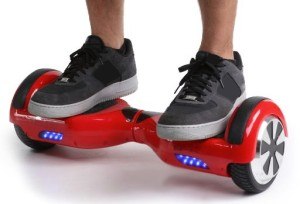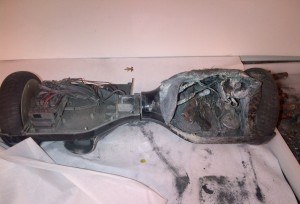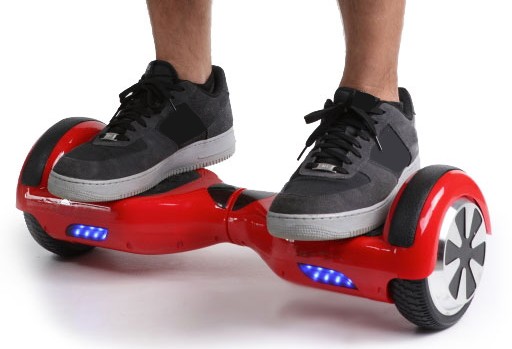As more incidents of hoverboard-related fires make the news and the Consumer Product Safety Commission continues its investigation into the cause of the fires, pressure is mounting for manufacturers who face the threat of product seizure for failing to comply with U.S. safety standards.
The CPSC recently issued a letter to manufacturers of the self-balancing scooters requesting compliance with newly released voluntary safety standards as outlined by Underwriters Laboratory. Though some components of hoverboards, such as battery packs and power supplies, may be UL certified, the agency is also requesting that the lithium ion batteries used within the product comply with certain safety requirements.
According to the letter, drafted by Robert Howell, acting director office of compliance and field operations at the CPSC, the agency has received reports of 52 hoverboard fires in 24 states between December 1, 2015 and February 17, 2016. Thus far, the fires have caused $2 million in property damage as well as the destruction of two homes and a car.
Many of these fires occurred indoors and could have resulted in serious injuries if they had not been put out by consumers, the agency stated.
CPSC engineers continue to test hoverboards at its National Product Testing and Evaluation Center in Rockville, Maryland.
“We are actively investigating a number of companies that make or sell hoverboards,” U.S. CPSC Chairman Elliot F. Kaye said in a recent statement on the safety of hoverboards and the status of the investigation.
According to Kaye, the agency is trying to find the root cause of hoverboard fires.
“CPSC staff is focusing on the components of the lithium-ion battery packs as well as their interaction with the circuit boards inside the units. CPSC staff has consulted with test laboratories, lithium-ion battery representatives and other outside experts to verify safe design practices for use of lithium-ion batteries in hoverboards. There are certain basic safety technologies we expect these units to have that should prevent overheating and potential combustion,” Kaye explained. “These are the same readily-available technologies that exist in properly manufactured lithium-ion batteries used in the notebook computers and cell phones we all use every day.”
Besides the fire risk associated with the balance boards, the agency is aware of the increasing number of serious injuries and emergency room visits associated with the product. As a result, Kaye said, the investigation has expanded to include falls associated with hoverboards.
“At first glance, it is easy to believe the risk of falling off a hoverboard is an obvious one and to dismiss those injuries as user inexperience or error,” said Kaye. “However, I am concerned, for example, that the current designs of these products might not take fully into consideration the different weights of different users, potentially leading to the units speeding up or lurching in a manner that a user would not have reason to anticipate, especially a first-time user.”
The agency is researching the product’s design to evaluate any hidden dangers that may cause fall injuries to occur. The agency director said that hospitals across the country are reporting spikes in children and adults being admitted after suffering serious falls.
“If you or your child continue to use this product, I recommend that you do so with a helmet and pads. I have two very active young boys, so I very much appreciate the struggle sometimes to get kids to use safety gear. But, wearing proper safety gear in this instance should be non-negotiable,” Kaye said.
CPSC is actively investigating the safety of hoverboards made and/or sold by:
Smart Balance Wheel/One Stop Electronic Inc.
Smart Balance Wheel Scooter/Glide Boards
Hover-way Hands-Free Electric/Digital Gadgets LLC
Swagway Hands-Free Smart Board/Swagway LLC
Smart Balance Board/I Lean Hoverboards
E-Rover-Mini Smart Balance Scooter/LeCam Technology
Smart Balance Wheels/Kateeskitty
Hoverboard360.com
iMOTO/Keenford Limited
YOOLIKED
Smart Balance Wheel/Luxiyan and
Uwheels
DEYA LED/E-Rover Smart Balance Wheel /Shenzhen yuan jia jie Technology Co. Ltd
Since the agency’s recent announcements, one retailer has offered consumers the opportunity to obtain a full refund in return for the product.
“I am pleased that at least one leading retailer is erring on the side of caution and taking action now,” said Kaye. “For consumers who purchased a hoverboard from Amazon, they can return the product right now for a full refund. I want to commend Amazon for voluntarily stepping up, providing a free remedy and putting customer safety first.”
Kaye is hopeful that other retailers will follow Amazon’s lead.
“As encouraged as I am by Amazon’s actions, I expect other retailers and manufacturers of hoverboards to take action and offer a full refund now to their customers as well. I also expect responsible large-volume online sellers in particular to stop selling these products until we have more certainty regarding their safety,” Kaye said.
At this time, the presence of a UL mark on hoverboards or their packaging should not be an indication to consumers of the product’s safety, he said, noting that it could be a sign of a counterfeit product.
UL, a global safety science organization, recently announced that it was accepting product submittals of hoverboards for construction evaluation, testing and/or UL certification. According to a recent statement, “UL will now be able to test and certify these devices using UL 2272, which covers the electric drive train including the rechargeable battery and charger system combination for use in self-balancing scooters.”
“With UL 2272, our expert science, research, and engineering teams have now developed the appropriate requirements and methodology to confidently evaluate and test the entire self-balancing scooter for electrical and fire-hazard safety as a system,” said Jeff Smidt, vice president and general manager for UL’s Energy and Power Technologies division.
Kaye noted that colleges across the nation have been active in prohibiting the use of hoverboards on campus and offered tips to consumers who use hoverboards. These include:
- Having a working fire extinguisher nearby while charging or using the boards in and around a home.
- Charging hoverboards in an open area away from combustible materials.
- Wearing a skateboard helmet, elbow and knee pads and wrist guards.
- Avoid using a hoverboard on or near a road.
Was this article valuable?
Here are more articles you may enjoy.


 GSK Zantac Appeal Gets Tough Questions From Some US Judges
GSK Zantac Appeal Gets Tough Questions From Some US Judges  US Regulator Takes Initial Steps to Boost Self-Driving Cars
US Regulator Takes Initial Steps to Boost Self-Driving Cars  Forecast Calls for Wildfires to Burn More Land Across U.S. This Year
Forecast Calls for Wildfires to Burn More Land Across U.S. This Year  Report: Insurers Pay $1.6B in Dog Bite Claims, as Frequency Soars
Report: Insurers Pay $1.6B in Dog Bite Claims, as Frequency Soars 